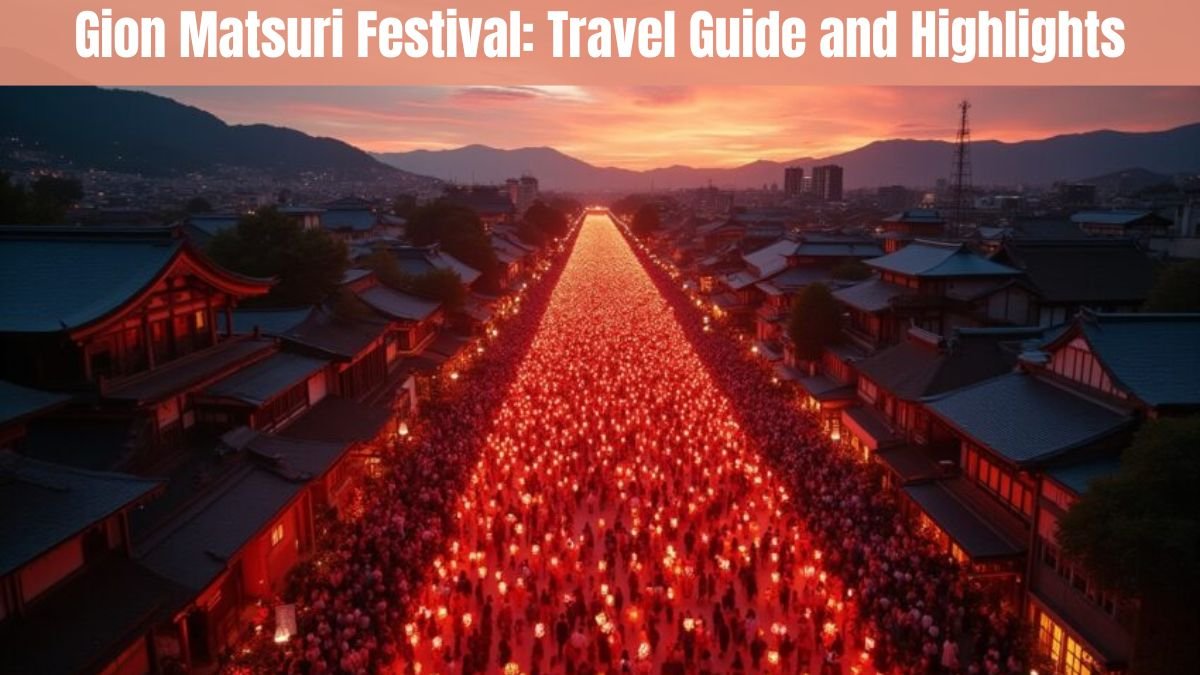The month of July in the famous Japanese city of Kyoto is marked by a special festival known as Gion Matsuri. This festival fills the entire city with vibrancy, color, and culture. Gion Matsuri is not just a festival, but a vibrant display of Japanese Shinto tradition, community cooperation, and historical heritage. Participation in this festival requires neither Shinto nor Japanese; everyone is welcome.
What is Gion Matsuri?
At the heart of Gion Matsuri are Junko floats. These massive floats are decorated to resemble Japanese temples, mountains, or historical sites. They can reach heights of up to 20 feet and weigh up to 12 tons. These floats are pulled by teams of up to 50 people, making them a grand and captivating spectacle.
The festival features not only floats, but also traditional dances, musical performances, and displays of local family heirlooms. All of this brings to life Kyoto’s deep Shinto traditions and cultural heritage.
History of Gion Matsuri
Gion Matsuri’s history dates back more than 1,000 years. It began in 869 AD. Originally, the festival was a purification ceremony, aimed at removing diseases and bringing peace to the city. Over time, the festival evolved into a celebration of Kyoto’s cultural and historical heritage.
The Yamaboko floats displayed at Gion Matsuri represent each neighborhood. These floats require a significant amount of manpower to pull, symbolizing community spirit and cooperation.
When is Gion Matsuri celebrated?
Gion Matsuri is held throughout the month of July. The main attractions are the float parades held on July 17th and 24th. The festival begins with a five-day period called Kippu-iri, during which people pray for safety and well-being.
The festival concludes with the grand Yamaboko Junko Parade at the end of July. Various events and activities take place throughout the city throughout the month, but the main attraction is the float parade.
What else can you see during the Gion Matsuri?
Other attractions in Kyoto are also worth visiting during the Gion Matsuri Festival.
Yasaka Shrine
Located in the Gion area of Kyoto, Yasaka Shrine is the spiritual center of the festival. It was built in 656 AD. Upon arrival, you’ll see the red, yellow, and green gates and main hall, which are illuminated at night. Visiting the shrine allows you to experience Shinto tradition, traditional architecture, and natural beauty.
Traditional Parades and Floats
The main attraction is the huge Yamaboko floats. Pulling these floats reflects community spirit and cooperation. The floats feature beautiful paintings, decorations, and historical symbols.
Dance and Music Performances
The festival also features traditional dance and music performances. Locals play traditional instruments and dance, making the atmosphere lively and vibrant.
Heritage and Handicrafts
Local families display their heritage treasures. This further enhances the cultural significance of the festival and allows travelers to experience Japanese tradition.
Kyoto’s Gardens and Temples
In addition to the festival, you can also visit Kyoto’s historic temples, gardens, and natural sites. These sites offer a sense of peace, color, and natural beauty.
Travel Tips During Gion Matsuri
- Arrive Early: Arrive on time to see the main parades and floats.
- Follow community rules: Maintain discipline during the festival and avoid jostling near the floats.
- Try local cuisine: Enjoy street food and traditional dishes on the streets of Kyoto.
- Bring a camera: Don’t forget to capture the colorful floats, dances, and music.
- Wear comfortable clothing: July can be hot, so wear light and comfortable clothing.
The Significance of Gion Matsuri
Gion Matsuri is not just a festival. It symbolizes Kyoto’s cultural, historical, and spiritual identity. This festival demonstrates how thousands of years old traditions are still alive today and strengthen the sense of community.
For travelers, this festival is an opportunity not just to watch but to experience. The grandeur of the floats, the fusion of traditional music and dance, local art, and Shinto traditions make Gion Matsuri unforgettable.
Conclusion
If you want to experience a cultural and historical journey through Japan, be sure to visit Gion Matsuri, held in Kyoto in July. This festival not only celebrates Japanese tradition, but also lets you experience the city’s rich heritage, natural beauty, and community spirit. Whether you’re a history buff, nature lover, or just want to enjoy the festivities, Gion Matsuri offers something special for everyone.
